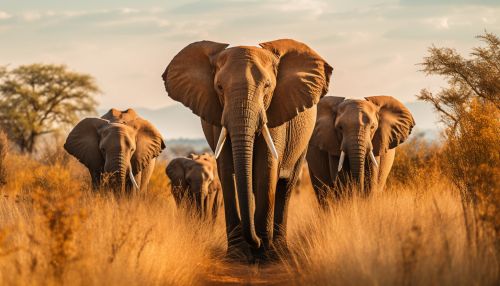African National Parks
Overview
African National Parks are protected areas across the continent of Africa, designated for the conservation of wildlife and biodiversity. These parks play a crucial role in preserving the unique ecosystems and species that inhabit the continent, while also providing opportunities for tourism and research. The parks vary greatly in size, biodiversity, and management strategies, reflecting the diverse landscapes and socio-economic conditions across Africa.


History
The concept of national parks in Africa has its roots in colonial times, when European powers established game reserves to protect certain species, primarily for hunting purposes. The first African national park was Virunga, established in 1925 in the Belgian Congo. The park was created to protect the critically endangered mountain gorillas, and it remains a significant conservation area today.
Over the years, the number of national parks across Africa has increased significantly, with the establishment of parks such as Kruger in South Africa, Serengeti in Tanzania, and Etosha in Namibia. The creation of these parks has often been driven by the need to protect specific species or ecosystems, as well as the potential for tourism revenue.
Biodiversity
African National Parks are home to a vast array of biodiversity, including many species that are endemic to the continent. These parks protect a variety of ecosystems, from the savannahs of East Africa to the rainforests of Central Africa and the deserts of North Africa.
The parks are particularly important for the conservation of large mammals, including elephants, lions, rhinos, and gorillas. Many of these species are threatened or endangered, and national parks provide critical habitat for their survival. In addition to mammals, the parks also protect a diverse range of birds, reptiles, amphibians, and insects, as well as numerous plant species.
Management and Conservation Challenges
Managing African National Parks presents a range of challenges, from poaching and habitat loss to climate change and human-wildlife conflict. Many parks are located in regions with high levels of poverty and political instability, which can make conservation efforts difficult.
Poaching remains a significant threat in many parks, particularly for high-value species such as elephants and rhinos. Despite efforts to combat poaching, it continues to be a major problem, driven by the demand for ivory and rhino horn in international markets.
Habitat loss is another major challenge, as expanding human populations and agricultural activities encroach on park boundaries. This can lead to conflicts between wildlife and local communities, as animals stray outside of park boundaries in search of food or water.
Climate change poses a growing threat to African National Parks, with potential impacts including changes in rainfall patterns, increased frequency and intensity of droughts, and shifts in the distribution of species. These changes can disrupt ecosystems and threaten the survival of species that are already at risk.
Tourism
Tourism is a major component of many African National Parks, providing a significant source of revenue for conservation efforts and local economies. The parks attract visitors from around the world, drawn by the opportunity to see iconic African wildlife in its natural habitat.
However, tourism also presents challenges for park management. High visitor numbers can put pressure on ecosystems and wildlife, while the reliance on tourism revenue can leave parks vulnerable to fluctuations in visitor numbers due to factors such as political instability or global events.
Despite these challenges, tourism in African National Parks can be a powerful tool for conservation, raising awareness of the importance of biodiversity and providing a tangible economic incentive for its protection.
